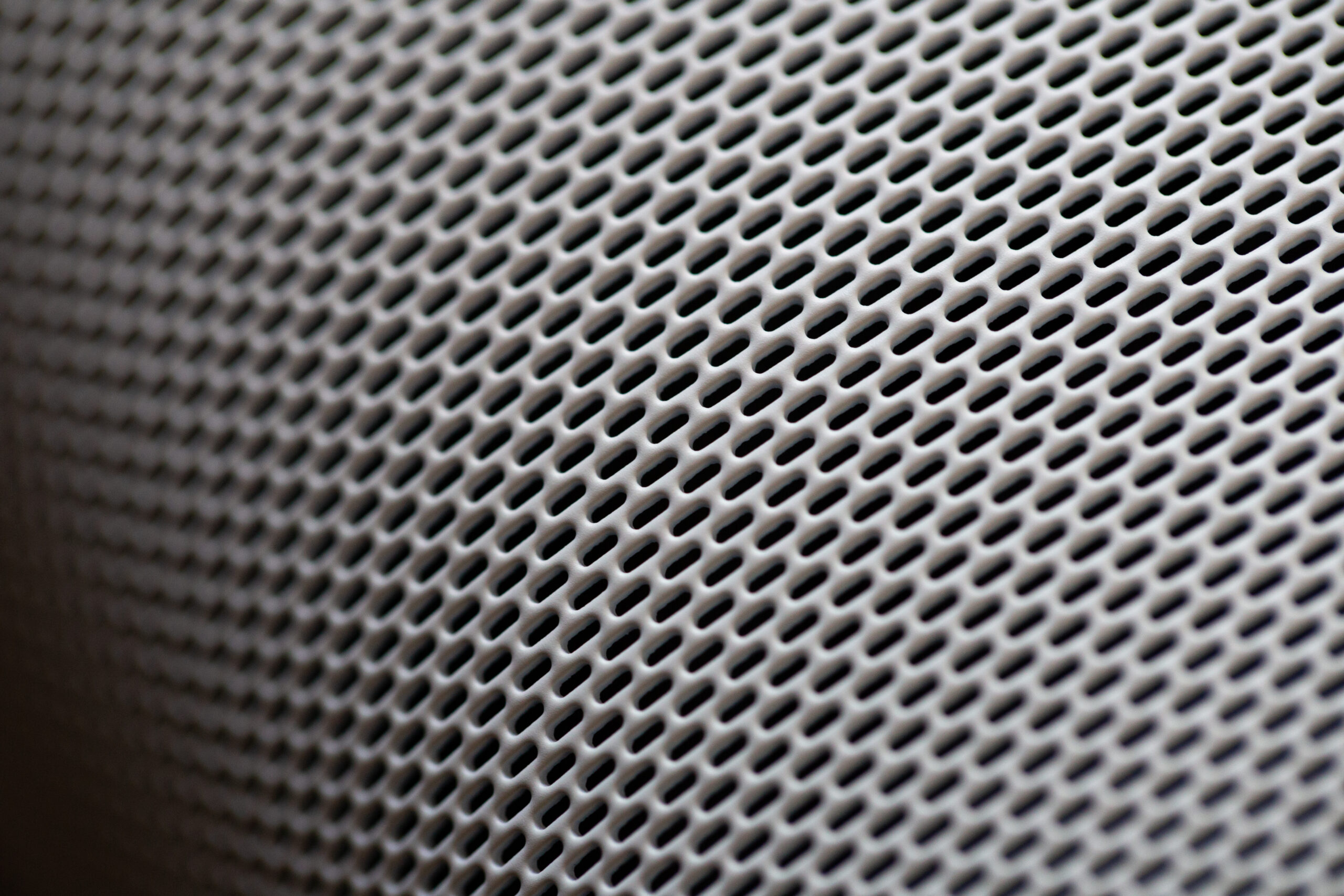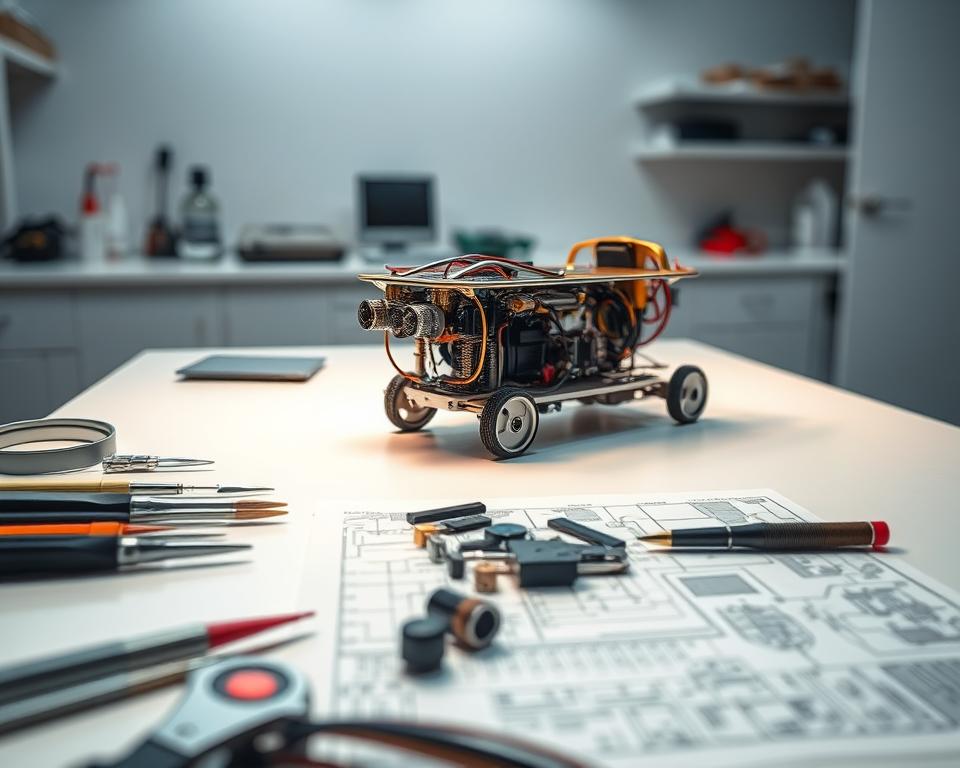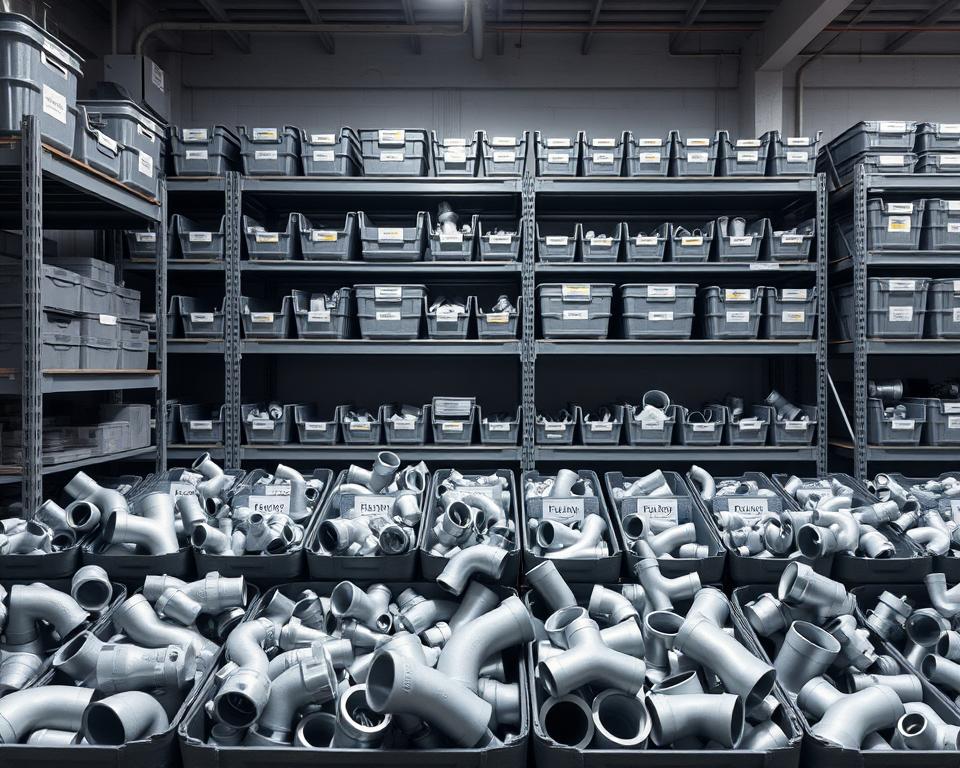Examining Advancements in Alloy 3D Printing Tech
The international sector for 3D printed metal is forecasted to escalate to $7.9 billion by 2028. This exponential expansion is driven by substantial developments in metal 3D printing tech. These breakthroughs are redefining how we produce complicated parts and structures. Industries such as space and medicine are at the vanguard, harnessing 3D printing metal to produce intricate, tailored parts with unparalleled accuracy.
This piece examines the state-of-the-art technologies propelling this transformation. It uncovers how metal 3D printing is essentially changing production techniques. By investigating these advancements, we gain insight into the trajectory of fabrication and the enormous potential of this tech.
Grasping Metal 3D Printing
Metal 3D printing is changing the production sector by allowing the fabrication of complex metal pieces with unparalleled exactness and versatility. This technology enables for the sequential building of intricate parts, providing significant benefits over traditional methods.
What is Metal 3D Printing?
Metal 3D printing, or metal 3D printing, employs various techniques to manufacture metal components. A 3D printing device metal printing machine operates by placing matter incrementally, immediately from digital models. This method supports the fabrication of complicated forms and tailored designs.
The Development of Metal 3D Printing
The evolution of metal 3D printing started in the end of the 20th century with early designs of basic designs. Over the decades, developments have broadened its capabilities, moving from rudimentary models to high-performance components. Today, alloy 3D printing is employed in aviation, vehicle, and healthcare sectors, thanks to ongoing innovation.
Key Gains of Metal 3D Printing
Using a metal 3D printing device delivers numerous benefits over classical manufacturing methods. These include:
- Creativity: The ability to manufacture complex forms and intricate geometries that traditional techniques cannot attain.
- Minimized Waste: Metal 3D printing utilizes substance economically, minimizing material loss during the manufacturing technique.
- Tailoring: Readily create tailored pieces, enabling quick model development and personalized products across multiple fields.
- Pace: Speedier manufacturing periods from concept to end product, optimizing the manufacturing workflow.
These advantages make metal 3D printing a attractive solution for companies aiming to innovate and enhance their manufacturing abilities.
The Development of Metal 3D Printing Methods
The development of metal 3D printing has been remarkably remarkable, transitioning from rudimentary beginnings to the sophisticated methods we now observe. This path has centered around enhancing the sophistication of *metal 3D printed components*, optimizing the utilization of *3D printing alloy powder*, and extending the availability of *metal 3D printing service* businesses.
Early Innovations
At its inception, metal 3D printing was marked by experimental approaches and a limited selection of materials. The first major innovations were SLM and electron beam melting. These techniques paved the way for more consistent manufacturing of alloy pieces. Pioneering practitioners harnessed these technologies to create intricate geometries that traditional production techniques couldn’t manage.
Modern Trends in Technology
Currently, the innovations in alloy 3D printing are transforming manufacturing. The emphasis is on accelerating print processes, enhancing material properties, and cutting costs. The creation of high-performance *3D printing metal powder* has made it possible to produce robust and exact *metal 3D printed pieces*. Furthermore, the increase of *metal 3D printing provider* businesses has made sophisticated production accessible to firms of all types.
Powder Bed Fusion Techniques in Alloy 3D Printing
Powder-Based Fusion methods have revolutionized metal 3D printing, delivering superior accuracy and outstanding substance compactness. This process employs a beam to melt fine material particles, including the cutting-edge alloy powder bed fusion method. It excels in producing intricate geometries that traditional fabrication techniques cannot achieve.
Two main PBF techniques stand out: Laser Sintering and Laser-Based Sintering. Each provides specific benefits and is essential in sectors like aviation, car, and medical manufacturing.
- Selective Laser Melting: Using a intense light source, it completely fuses the metal powder, creating components with outstanding physical characteristics.
- Laser-Based Sintering: This technique employs a light source to specifically bind alloy grains, perfect for creating pieces with complicated internal structures and high precision.
Direct metal laser sintering is preferred for complex designs and quick model development, providing effectiveness without sacrificing quality. Despite PBF techniques have high costs and longer production speeds, their accuracy and material utilization are propelling their implementation across industries.
Here is a in-depth examination:
| Factor | SLM | DMLS |
|---|---|---|
| Type of Laser | High-power laser | Fiber optic laser |
| Material Efficiency | Superior | Average to Superior |
| Application Flexibility | Highly flexible | Exceptionally adaptable |
| Primary Sectors | Space, Car, Medical | Aviation, Car, Medical |
| Standard Materials | Al, Titan, Steel | Aluminum, Ti, Steel |
Both metal powder bed fusion technologies are developing, promising increased productivity and material properties. As technology advances, the potential of Powder Bed Fusion in alloy 3D printing is expected to grow, fueling advancement across diverse industries.
Implementations of Selective Laser Melting
Laser Sintering has changed the alloy 3D printing sector, offering unparalleled exactness and adaptability. It allows the production of complex constructions with effortlessness. This segment examines how Selective Laser Melting is used across different fields, showcasing its substantial impact.
Selective Laser Melting in Aerospace Industry
In aerospace, Selective Laser Melting is vital for creating intricate engine pieces such as turbine components and fuel nozzles. It facilitates for significant mass reduction while maintaining stability. This results in more efficient and less heavy aerospace vehicles.
By boosting energy efficiency and lowering emissions, Laser Sintering supports green initiatives in the aviation industry.
Uses in Medicine of Laser Sintering
The healthcare industry greatly gains from Selective Laser Melting, particularly in creating personalized medical devices and artificial limbs. Medical professionals can now create devices tailored to particular individuals, ensuring a improved compatibility and functionality. This produces improved patient outcomes.
Personalized prosthetics, such as those for orthopedic and dental applications, are created to fit the unique anatomy of each person. This highlights the versatility of alloy 3D printing in enhancing medical practices.
| Field | Applications | Benefits |
|---|---|---|
| Aviation | Engine pieces, turbine blades, fuel injectors | Weight reduction, improved energy efficiency, improved functionality |
| Medicine | Tailored medical devices, artificial limbs | Custom healthcare solutions, enhanced compatibility and performance, shorter convalescence |
Advantages of Electron Beam Melting
EBM is a leading-edge method in metal 3D printing. It utilizes a intense beam of electrons to fuse metal powder in a vacuum chamber. This technique provides several significant benefits.
Reducing Oxidative Degradation:
One significant benefit of Electron Beam Fusion is its vacuum operation, which greatly decreases oxidation. This is essential for substances like titanium and its alloys. These are vital in aviation and medical applications due to their susceptibility.
Augmented Substance Traits:
Working in a vacuum chamber not only maintains the alloy clean but also enhances its material traits. Electron Beam Melting-produced pieces often show enhanced tensile strength and endurance. These traits are essential for implementations under intense pressure.
Intricate Design Possibilities:
EBM is exceptional in producing intricate designs and intricate shapes. The accuracy of the electron ray enables precise and tailored components. This is beyond what conventional production can attain.
| Aspect | Benefit |
|---|---|
| Reduction in Oxidation | Reduced oxidation due to vacuum operation |
| Alloy Purity | Augmented because of operation in vacuum |
| Mechanical Properties | Improved tensile strength and endurance |
| Design Versatility | Capability to manufacture intricate and personalized components |
Electron Beam Melting’s use of electron rays in a vacuum leads to superior alloy pieces. These pieces have reduced material oxidation and enhanced mechanical properties. This renders EBM essential in industries demanding accuracy and strength, such as aviation and healthcare device fabrication.
Innovative Laser-Based Sintering
DMLS has revolutionized the alloy 3D printing sector. It uses a powerful light source to fuse metal powder incrementally, creating intricate parts without classical patterns. This technique stands out for its exactness and effectiveness.
Materials Needed for DMLS
For Laser-Based Sintering, substances must meet precise standards for optimal functionality. Primary materials involve aluminium, Ti, alloy steel, and cobalt-chrome compounds. These substances require uniform particle size, excellent heat characteristics, and elevated melting temperatures to endure the powerful light energy.
- Uniform Powder: The material powder must be uniformly sized and shaped for exact sintering.
- Heat Characteristics: Substances must optimally absorb and transfer heat to melt and harden properly.
- Extreme Heat Resistance: Guaranteeing integrity during the sintering process prevents defects.
Differences between DMLS and Conventional Manufacturing
When contrasting Laser-Based Sintering to traditional fabrication, Direct Metal Laser Sintering offers clear benefits. It can create complicated forms, cut down on material loss, and greatly reduce manufacturing times. For intricate patterns and prototypes, Laser-Based Sintering provides unmatched adaptability and accuracy.
| Element | Laser-Based Sintering | Classical Manufacturing |
|---|---|---|
| Complex Geometry | Superior | Constrained |
| Material Loss | Reduced | High |
| Production Time | Short | Lengthy |
| Personalization | Extremely Adaptable | Constrained |
By adopting DMLS, industries can achieve substantial gains and advancements in product development and production. This tech is initiating a modern epoch of progress.
Future of Energy-Based Deposition
Looking to the future, DED is expected to transform fabrication. Its potential for rapid material placement and the potential to improve or restore components marks a notable change. This tech is expected to profoundly affect fields like large-scale manufacturing and power.
DED enables the restoration of components that have worn out, thus extending the lifespan of vital devices. This is especially beneficial in sectors requiring heavy equipment, where substitute parts can be both lengthy and expensive.
The flexibility of Direct Energy Deposition in handling multiple alloys turns it into a ideal option for tailored production results. It provides exactness and effectiveness to the process, opening up new avenues in product design and engineering.
Here’s a in-depth examination of the advantages DED provides in various industries:
| Field | Gains from Energy-Based Deposition |
|---|---|
| Industrial Production | High deposition rates, restoration and repair abilities |
| Energy | Upkeep, extension of part lifespan, and expense savings |
| Aerospace | Tailored production, reduced-weight parts, exactness |
| Medicine | High precision, biocompatible materials, swift prototype creation |
In summary, the advancement in Direct Energy Deposition indicates a positive outlook. It promises to enhance manufacturing efficiency and augment material optimization, placing Direct Energy Deposition at the cutting edge of manufacturing innovation.
Metal 3D Printing Innovations in Vehicle Manufacturing
Metal 3D printing is revolutionizing the vehicle field, introducing novel innovations to car creation and production processes. This technology enables the creation of personalized parts, transforming traditional production methods.
Influence on Auto Design
Vehicle engineers now employ alloy 3D printing to craft complex and lightweight frameworks. This versatility facilitates the production of unique components that boost auto performance and aesthetics. Notably, complex geometries that were once impossible or costly are now attainable.
Manufacturing Efficiency Improvements
3D printing technology substantially enhances fabrication efficiency in the automotive sector. It reduces the demand for several fabrication phases, optimizing production lines and reducing waste and lead times. Moreover, rapid prototyping is enabled, enabling speedier revisions and faster release for new designs.
The benefits of 3D printing in car parts are evident: boosted precision and reduced material consumption. These advantages result in notable financial gains and operational efficiency across the sector.
Jetting Process: A Pivotal Leap in Alloy Additive Manufacturing
Jetting Process indicates a pivotal leap forward metal 3D printing, offering various benefits for commercial purposes. This process, which places a 3D printing alloy binding agent sequentially, substantially reduces manufacturing duration over traditional processes. Its economic efficiency is notable, advantageous to manufacturers aiming to lower costs without compromising accuracy.
Yet, it’s essential to acknowledge some limitations. Initial pieces may show reduced material integrity and strength. To reduce this, supplementary methods like fusion can be applied. These steps improve substance traits, equating them with those achievable through other metal 3D additive manufacturing methods.
Even with these trade-offs, Binding Technology’s benefits, notably in terms of quickness and price, are notable. By incorporating a 3D printing alloy binding agent into their techniques, firms can attain significant efficiencies. This positions them at the leading edge of manufacturing advancement.
Growth with Large-Scale Metal 3D Printing Devices
Novel big metal 3D printing machines are transforming the production of complex, big parts across sectors. These printing machines offer substantial capability but also introduce specific challenges. Tackling these obstacles is essential to completely leverage their capabilities.
Challenges of Large Format Printing
One significant challenge with big metal 3D printing machines is ensuring precision over massive spaces. As prints increase in volume, guaranteeing consistent precision and stability becomes more complex. Prolonged fabrication periods for large items also bring factors that challenge the production technique.
- Precision and Accuracy: Maintaining accuracy over larger areas is challenging, often needing sophisticated tuning and monitoring techniques.
- Printing Velocity: Bigger components take longer to print, which heightens the risk of errors and the requirement for improved quality control measures.
- Material Handling: Handling the big volumes of material or printing substance demanded for these printed items presents organizational obstacles in material storage and processing.
Industries Benefiting from Large Format Printers
Several sectors will significantly profit from big alloy 3D printing machines, particularly those requiring massive, intricate parts. The capacity to 3D fabricate big structures on-demand provides significant operational and economic advantages.
| Sector | Benefits | Applications |
|---|---|---|
| Architecture | Decreased fabrication periods, Tailoring | Architectural elements, Structural frameworks |
| Marine Construction | On-site manufacturing, Financial effectiveness | Ship bodies, Engine components |
| Petrochemicals | Long-lasting component fabrication, Shorter idle periods | Pipeline connections, Boring machinery |
These illustrations showcase the wide possibilities implementations of large format metal 3D printing devices across multiple sectors. As innovation advances, it will be fascinating to observe how 3D producing big items will additionally transform these fields.
Advancements in Materials in Alloy 3D Fabrication
The alloy 3D fabrication sector is developing rapidly, propelled by breakthroughs in substances. Innovative alloy particles and mixtures are driving this development, substantially enhancing the innovation’s abilities and implementations. Worldwide firms are investing capital into innovation to reveal innovative substances for diverse commercial applications.
A major jump in 3D printing metal progress is the appearance of unique alloy combinations. These alloys offer augmented durability, thermal stability, and resistance to corrosion. Such developments are vital for industries like space, car, and medicine, where strength and performance are critical. Moreover, personalizing these materials for specific requirements offers unmatched adaptability and productivity in production.
To illustrate the range and advantages of advancements in materials in metal 3D printing, consider the table below, which describes key developments and their applications:
| Advancement in Materials | Important Characteristics | Commercial Uses |
|---|---|---|
| Titanium Alloys | Lightweight, superior durability, corrosion resistance | Aviation, healthcare devices |
| Nickel Superalloys | High-temperature resistance, strength | Electricity creation, vehicle, aviation |
| Al Alloys | Lightweight, anti-corrosion properties | Automotive, aerospace |
| Steel Mixtures | Robustness, hardness, oxidation resistance | Medical instruments, food manufacturing, automotive |
These examples highlight the profound influences of advancements in materials on 3D fabrication materials progress. As these advancements advance, they are set to change traditional production, allowing complex shapes and personalized substance traits.
Custom Metal Parts: Changing Production
The capacity to manufacture custom alloy components through 3D printing is changing fabrication. This innovation provides unmatched 3D fabrication tailoring abilities. It facilitates industries to create complicated layouts and customized pieces effortlessly.
Tailoring Potentials
3D fabrication tailoring offers a major gain by facilitating parts customized to particular demands. Unlike traditional processes, 3D printing facilitates rapid prototyping and adjustments. This adaptability is vital for sectors demanding accuracy and distinctiveness in their components.
- Creativity: 3D fabrication facilitates complex shapes and complex patterns that are difficult to accomplish with traditional techniques.
- Rapid Prototyping: Allows swift movement from idea to prototype, producing faster iterations and a decreased time-to-market.
- Cost-Effective Production: Lowers waste and resource expenditures by manufacturing only what is required.
Fields Leveraging Tailored Metal Pieces
Several sectors are employing tailored alloy components through 3D fabrication tailoring to enhance their products and methods:
- Healthcare: Personalized alloy components are used to create individualized implants and replacement parts, boosting comfort and compatibility.
- Car: Fabricators utilize 3D printing to create lightweight, durable pieces that enhance auto efficiency and fuel economy.
- Consumer Products: Firms can produce custom products tailored to specific tastes, delivering a distinct customer benefit to customers.
The adoption of custom alloy components and 3D printing customization is propelling multiple industries into a novel epoch of manufacturing efficiency and effectiveness.
Monetary Influences of Metal 3D Fabrication Service Businesses
Metal 3D printing services are transforming fabrication with their versatility and cost-efficiency. They greatly reduce down on investment and lead times, associated with traditional production. This allows for the rapid and economic creation of intricate metal parts, hastening innovation cycles.
One significant gain of metal 3D printing is its material efficiency. Conventional processes often produce significant scrap. In opposition, 3D printing adds substance layer by layer, reducing material loss. This not only lowers production costs but also has a positive green benefit.
Financial gains are another advantage, because of the ability to produce pieces on demand. This approach gets rid of the demand for big warehouses, freeing up capital for other investments. It’s notably valuable for industries needing tailored or small-batch pieces, like space and healthcare industries.
The monetary effect of alloy 3D additive manufacturing also encompasses employment. As demand for these solutions increases, so does the requirement for skilled workers. These jobs encompass operating 3D printing machines, handling finishing, and quality control. This growth boosts the employment sector and supports financial growth.
These benefits are clear when juxtaposing conventional manufacturing to alloy 3D additive manufacturing:
| Element | Classical Production | Metal Fabrication |
|---|---|---|
| Initial Investment | High | Low |
| Lead Time | Long | Short |
| Material Loss | Substantial | Low |
| Personalization | Limited | Extensive |
The monetary effect of metal 3D fabrication is also observed in its market edge. Companies using these solutions can rapidly launch items to consumers, reacting swiftly to consumer demands and fashions. This adaptability is essential in the current rapidly changing economic environment.
The growth of metal 3D printing offerings is transforming business paradigms, enabling more effective, economic, and progressive production processes. As this technology advances, its economic impact will likely expand, further transforming business strategies and economic trends.
Green Practices in Alloy 3D Printing
The move towards eco-friendly approaches is crucial in the modern rapidly changing industrial world. Metal fabrication champions this shift, delivering approaches that greatly cut down on material loss and fuel usage. It allows a more productive use of resources, from design to product end-of-life.
One major advantage of metal fabrication is its material efficiency. Traditional methods often result in significant material loss, cutting away excess material to shape the end result. Green additive manufacturing, however, produces items layer by layer, using only what’s required. This method conserves substances and turns the fabrication technique greener, with minimized environmental impact.
Energy efficiency is essential for fabricators aiming to adopt eco-friendly practices. Alloy 3D printing processes tend to be more energy-efficient than traditional methods. The accuracy of eco-friendly fabrication reduces the need for numerous fabrication phases, thus cutting fuel usage. Additionally, on-site fabrication with metal fabrication machines can minimize the carbon footprint from transportation and logistics, improving eco-friendly approaches.
To sum up, metal fabrication is paving the way for a green industrial future. By adopting eco-friendly fabrication, industries can progress while preserving the earth. As this tech advances, it guarantees even more efficiency and a reduced environmental footprint. This emphasizes the importance for these practices in modern manufacturing.



